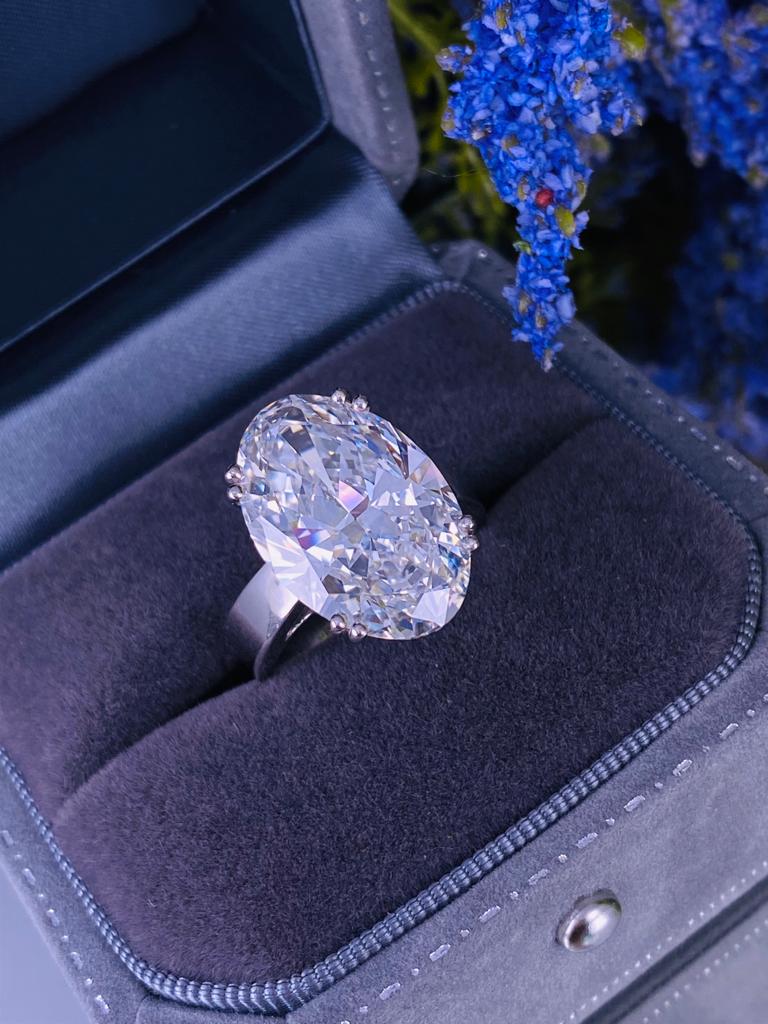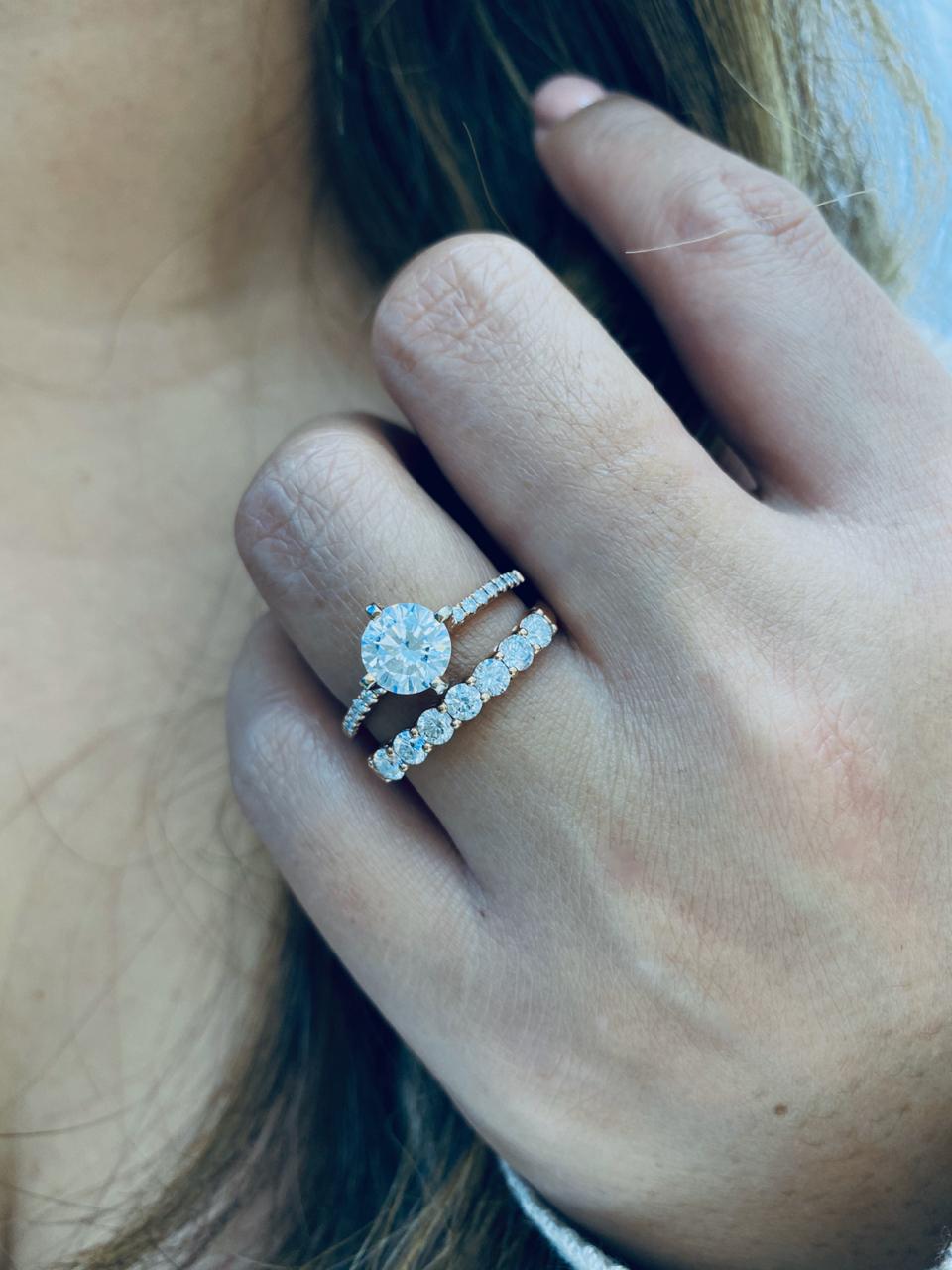The sparkle is one of the most magical things about a diamond, warmly welcomed in pop culture. Simultaneously, it’s one of the easiest things to spoil in a diamond. One careless movement — and the charm is destroyed.
How not to get in trouble while choosing diamond jewelry? Easy: check if its characteristics lead to the largest sparkle possible. In this guide, we’ll show you how.
In brief, the sparkle is the reaction of a diamond to light. And the best sparkling diamond has the structure that reflects it in the best way possible.
How to build such a structure in the raw stone? It’s real with a high-quality cut only. Here is the basic rule about the cut to generate the sparkle in diamonds:
The cutter should take care of the quality of diamond facets o create the sparkle. They are the places where a jewel interacts with light. Facets act like tiny mirrors on the stone’s surface, twinkling and sparkling. Thus, their number and purity always make a difference.
Schematically, you can see this effect in the image below. The light appears on the diamond’s surface, and you see how the stone sparkles in response.
-min.jpg)
Besides the quality of cut facets, diamond polish and symmetry change the brilliance. If your diamond is not round, check the length to width ratio. Its accuracy contributes to the equidistribution of light in various diamond shapes.
The spacing between diamond facets is also important. It contributes to the appearance (or absence) of dark areas on a diamond and its sparkling effect. In some shapes, you can spot the “bow-tie” effect, or a dark line in the center of the diamond shape. If you see something like this, it’s the evidence of a poor cut. This line spoils the elegance and beauty of the diamond’s appearance.
The optimal spacing and perfect symmetry make each facet sparkle to the greatest.
In 1919, the famous diamond cutter Marcel Tolkowsky invented the formula to achieve the top diamond brilliance. Since then, each diamond that addresses his criteria is titled “brilliant cut diamond.”
What unites perfect stones? Among all, such diamonds have a specific number of facets — 57 or 58. The classic round-shaped diamond is a top representative of this cut. It’s capable of creating the maximum sparkle — in terms of both brilliance and fire.
-min.png)
Besides, the brilliant cut diamond has the most scintillation — the dynamic flash effect that appears when you move a stone. These interchangeable flecks are multicolored and play with the dark areas in a stone.
The brilliance in the diamond is the interplay of its facets. Their number and ability to reflect the light by themselves and to each other work magic in a stone. The more facets a diamond has, the more complex the result becomes.
Just imagine what mastery is needed to orchestrate such a fragile and sophisticated interplay! That’s why the quality of a diamond cut is an art.If you’’e chosen the classic round shape for a diamond, your chances to get the brilliant cut are the highest. Still, to pick the most sparkling stone, check its diamond cut.
For this insight about the round brilliant cut, open the GIA certificate. It must go with each diamond purchase. In this document, make sure the jewel has an “Excellent” or “Very Good” mark in the “Cut” category. In practical terms, this word describes diamond sparkle and brilliance.
To check the brilliant cut by yourself, follow our instruction:
In any diamond shape, the number and the quality of cut facets create the most sparkle. So, spot these 2 factors to make the best choice about any shape.
Among all the existing diamond shapes, a round-cut diamond sparkles the most. It has the perfect number of facets and the cutting style. From the very beginning, this diamond shape was invented to maximize the diamond sparkle. Yet, there are other sparkling diamond shapes also worth your attention.

Oval-shaped diamonds have the same amount of facets as a round cut. The difference is in its length to width ratio. It makes such a stone look bigger. The oval option is a great value-for-money when it comes to sparkle.
A pear-shaped diamond has a tear form that reflects a tremendous amount of light. It may also have 58 facets if cut by rule and line. Even so, the pavilion frequently misses 4 facets — the cutters can make it from 4, 6, 7, or 8 facets.
These two shapes reflect more than two-thirds of all the light that enters a diamond surface. Even though it isn't perfect, the light distribution looks beautiful in them.
The tricky thing about heart and princess shapes is that it’s hard to achieve the perfect cut here. The exceptional mastery of a diamond cutter is a must. Also, pay attention to the ideal symmetry and polish.
These two options offer good sparkle for a low price. That’s because both radiant and cushion shapes mix the round-cut basis with other shapes. They create unusual yet brilliant appearances.
But again: since both radiant and cushion diamonds have less sparkle than top diamond shapes, carefully check the cut quality and the play of light on their facets.
Baguette is the worst diamond shape in terms of brilliance.
This shape makes a diamond sparkle less, even if it has an ideal cut. But with poor cut, it really sparkles like… an ordinary baguette.
Going for Asscher and Emerald diamonds also means sacrificing a tremendous amount of brilliance. Their very design doesn’t allow to maximize the sparkling interplay between the facets, no matter how well-cut they are. Nevertheless, these diamonds are valuable for intensified clarity and overall elegance.
Also, there’s a rule applicable to all the diamond shapes: the fewer facets the cutter creates, the less sparkle, brilliance, and fire is this stone capable of.
Yes, it can, but that’s not common. The stone can lose its brilliance if the jeweler isn’t careful while working with a setting.
The choice of a setting also makes a difference. Among all, it should let the light and reveal the best parts of a diamond for more sparkle. If you’re lucky to get the stone of exceptional brilliance, don’t hide it in a bezel setting — make it shine in a solitaire ring with a minimum number of prongs!

To intensify the sparkle, put diamonds in a halo or pave setting. This way, you’ll notice the magnificent play of not only facets but also the stones with each other. The exact choice depends on the size of your diamonds: halo design intensifies the sparkle of a center diamond, while the pave band creates the line of tiny sparkling jewels.
The best metals for a brilliant diamond are white gold and platinum. Thanks to their color and quality, they set off a diamond sparkling and add light to maximize its magnificent effect.

